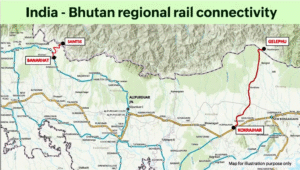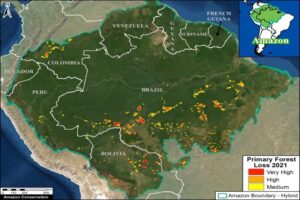
Minding the Minerals Gap – India’s Strategic Push in Critical Mineral Diplomacy
best online coaching for CLAT, online coaching for CLAT, CLAT Current Affairs 2026, Current Affairs 2026
Why in News:
On July 3, 2025, the foreign ministers of the Quad countries—India, Japan, Australia, and the US—jointly announced the launch of the Critical Minerals Initiative (CMI). The goal is to collaborate in securing and diversifying global supply chains of critical minerals. This is a significant step in India’s evolving resource diplomacy and global supply chain security.
This announcement is vital for understanding India’s energy future, technological sovereignty, and geoeconomic strategy. It holds direct relevance for CLAT 2026 aspirants preparing for topics under international relations, environmental law, and economic affairs.
Introduction:
As the global shift towards green energy intensifies, the demand for critical minerals—such as lithium, cobalt, nickel, and rare earth elements—has surged. These minerals are vital for electric vehicles, renewable energy, electronics, and battery storage systems.
However, many of these resources are concentrated in politically unstable or resource-monopolized countries, such as China. India’s dependence on these imports threatens its energy transition goals and national security. Hence, forming “mineral clubs” with strategic partners like Japan, the US, and Australia is essential to diversify supply chains, promote sustainable mining, and reduce dependency on major powers.
Point-wise Summary:
- India Joins Critical Mineral Initiative with Quad Countries
- On July 3, 2025, India, Japan, Australia, and the US jointly launched the Critical Minerals Initiative (CMI).
- Aimed at securing critical minerals through minilateral cooperation—informal, small-group diplomacy.
- Why Critical Minerals Matter
- Required for manufacturing solar panels, wind turbines, EV batteries, and semiconductors.
- Strategic for India’s green transition and national energy goals under “Net Zero” targets.
- China’s Dominance as a Wake-up Call
- China currently controls large shares of the rare earth mineral market.
- In 2024–25, China’s export restrictions created global supply shocks.
- India’s heavy dependence on China highlighted the vulnerability of its green industry.
- India’s Domestic Challenges
- India has limited domestic reserves and late-stage exploration of critical minerals.
- There’s urgent need for:
- Faster exploration
- Stable overseas tie-ups
- Tech and financial support for mineral extraction.
- Bilateral and Regional Partnerships
- India is forming mineral partnerships with countries like:
- Australia
- Zambia
- Argentina
- UAE and UK (for recycling and processing).
- But many of these countries are politically unstable or technologically backward, demanding risk mitigation frameworks.
- Why ‘Mineral Clubs’ or Minilaterals?
- These clubs provide:
- Coordination of joint investments.
- Shared exploration and mining strategies.
- Risk-sharing and R&D collaboration.
- ESG-compliant (Environmental, Social, and Governance) mining practices.
- Encourages a balanced and fair distribution of resources among developed and developing nations.
- Global South’s Role and India’s Strategic Positioning
- India advocates for the Global South perspective in these clubs.
- India insists on not being used merely as a storage or transit base, but as a centre for value-added processing, R&D, and clean tech manufacturing.
- Technology and Intellectual Property Sharing Barriers
- Advanced nations are reluctant to share critical technologies and patents.
- India stresses open-source collaborations, academic exchanges, and investment mechanisms to ensure real benefits.
- ESG and Sustainability Focus
- India supports global ESG norms, but from a Global South viewpoint, arguing for:
- Equity in global supply chains.
- No forced unilateral standards from the West.
- India also aims to upgrade its own domestic ESG compliance to attract investment.
- Africa and Southeast Asia: India’s Diplomatic Advantage
- India’s long-standing ties with African and ASEAN nations offer leverage.
- India is seen as a bridge between the West and the Global South.
- This allows India to negotiate better deals and form mutually beneficial partnerships.
Notes: Explanation of Key Terms
Term | Explanation |
Critical Minerals | Naturally occurring substances crucial to high-tech and green technologies but available in limited quantities. |
Rare Earth Elements (REEs) | A group of 17 metals essential for electronics, defense systems, and renewable energy tech. |
Minilateralism | Small-group diplomacy focused on specific shared goals; more flexible than multilateral forums like the UN. |
Global South | Refers to developing countries in Asia, Africa, and Latin America. Often used to contrast with the industrialized “Global North”. |
ESG Standards | Environmental, Social, and Governance criteria used to evaluate the sustainability and ethical impact of a business. |
Tech Sovereignty | A nation’s ability to independently develop, own, and control technologies without relying on foreign powers. |
CLAT-Focused Analysis
- Legal & Environmental Law Relevance
- India’s mineral diplomacy must comply with international environmental laws, including:
- Basel Convention (hazardous waste transfer)
- UNFCCC (climate change commitments)
- Domestic implications under:
- Mines and Minerals (Development & Regulation) Act, 1957
- Forest Conservation Act, 1980
- Environment Protection Act, 1986
- International Relations and Diplomacy
- Highlights India’s shifting stance from non-alignment to strategic alignments via informal minilateral setups.
- These can appear as comprehension passages or international affairs-based reasoning sets in CLAT.
- Ethical and Policy Implications
- India’s demand for equity-based mineral partnerships touches on:
- Global justice
- Environmental ethics
- Tech equity
- These are useful in CLAT essay writing and legal reasoning scenarios involving sustainable development.
Conclusion:
India’s participation in critical mineral clubs is a vital step toward ensuring resource security, green energy transition, and strategic independence in a multipolar world. These partnerships can boost R&D, support ESG compliance, and enable India to lead the Global South’s voice in international forums.
However, for these engagements to be genuinely transformative, India must:
- Avoid extractive partnerships.
- Demand fair tech-sharing.
- Prioritize long-term sustainability.
- Leverage its diplomatic capital in Africa and Southeast Asia.
As India navigates the minerals gap, its success will depend not only on resource access but also on strategic foresight, legal frameworks, and inclusive diplomacy.




